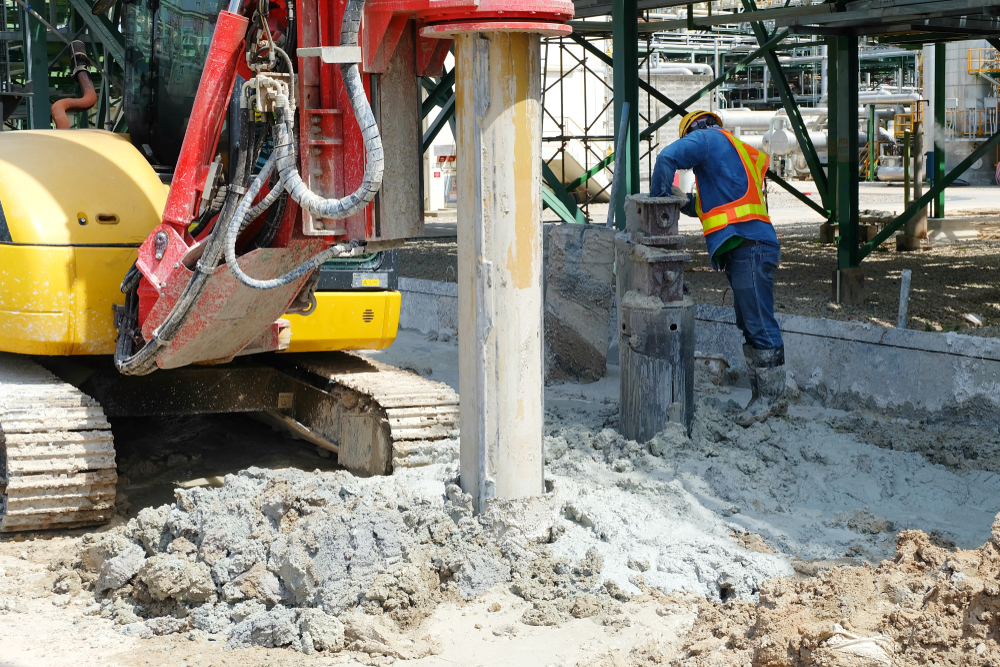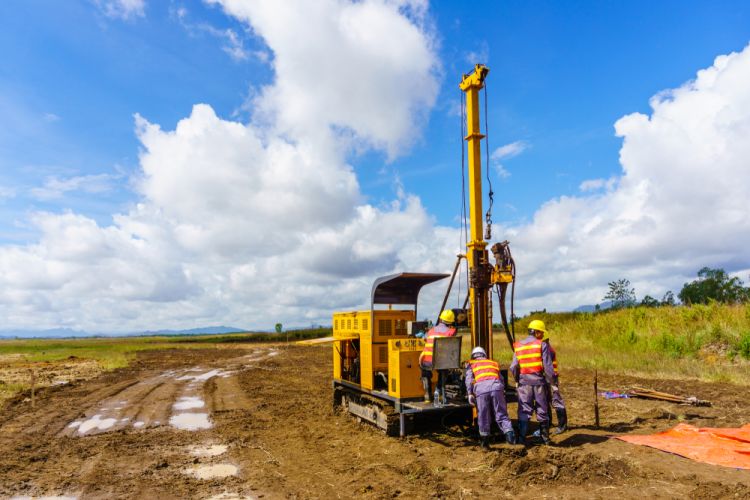The Best Strategy To Use For Geotechnical Engineering For Construction Projects
The Best Strategy To Use For Geotechnical Engineering For Construction Projects
Blog Article
How Geotechnical Engineering For Construction Projects can Save You Time, Stress, and Money.
Table of ContentsEverything about Geotechnical Engineering For Construction Projects10 Easy Facts About Geotechnical Engineering For Construction Projects DescribedThe Facts About Geotechnical Engineering For Construction Projects UncoveredThe Main Principles Of Geotechnical Engineering For Construction Projects 9 Simple Techniques For Geotechnical Engineering For Construction ProjectsGeotechnical Engineering For Construction Projects - An OverviewThe Buzz on Geotechnical Engineering For Construction Projects
Principles and Practice of Ground Enhancement. Ground Renovation Principles And Applications In Asia. Design evaluation in rock technicians.Cengage Knowing, Stamford, 666 p. Atkinson, J., 2007. The mechanics of dirts and foundations. The Observational Method in ground design concepts and applications.
The Of Geotechnical Engineering For Construction Projects
Lab and field screening plays a critical role in this procedure. By removing examples from the earth's subsurface and using a collection of examinations, geotechnical engineers can anticipate the behaviour of soil layers and review their suitability for different building and construction endeavours. The essence of geotechnical design in civil design can not be overemphasized, attributable to a number of variables: The initial action in any type of geotechnical research involves establishing the dirt kind at the construction site.
The foundation acts as the bedrock of any kind of construction project. Selecting the proper structure kind is a choice that pivots on the detailed evaluation offered by geotechnical design.

Geotechnical website examination is an essential step in the planning and execution of any kind of building job. It entails the collection and evaluation of information connected to the physical residential properties of dirt and rock beneath a suggested building and construction website. This details is vital for the design and construction of risk-free, stable, and sustainable structures.
Top Guidelines Of Geotechnical Engineering For Construction Projects
In this blog site, we will certainly dive into the importance of geotechnical site investigation, its various elements, and how it benefits construction projects. Geotechnical site examination, also recognized as subsurface expedition, involves a series of activities aimed at establishing the soil, rock, and groundwater problems at a construction site. The main objectives are to recognize potential geotechnical risks, analyze the design buildings of subsurface materials, and offer referrals for the layout and construction of structures, keeping walls, and other structures.
This might include geological maps, aerial photographs, previous examination reports, and historical data. The workdesk research aids in identifying prospective geotechnical issues and planning the succeeding fieldwork. Adhering to the workdesk study, a website reconnaissance is performed to aesthetically check the website and its environments. This includes observing the topography, drain patterns, existing structures, plant life, and any signs of instability or disintegration.
The Greatest Guide To Geotechnical Engineering For Construction Projects
Shallow examination pits are excavated to straight observe and sample the soil and rock. This approach serves for examining the top layers of the subsurface and identifying near-surface threats. Non-invasive geophysical methods, such as seismic refraction, ground-penetrating radar (GPR), and electric resistivity tomography (ERT), are utilized to map subsurface conditions and find abnormalities.
Soil and rock examples collected during the area examination are subjected to research laboratory testing to establish their physical and mechanical properties. Typical research laboratory examinations include grain dimension evaluation, Atterberg limits, compaction tests, triaxial shear examinations, and debt consolidation tests. These examinations give important data for geotechnical evaluation and style. The data gathered from the desk research, site reconnaissance, area examination, and lab screening are evaluated and analyzed to develop a detailed understanding of the subsurface conditions.
The main benefit of geotechnical site investigation is guaranteeing the safety and security of structures. By comprehending the subsurface problems, engineers can make structures and other structural elements that can stand up to the tons and ecological forces they will go through. This minimizes the risk of settlement, decrease, and structural failure.
Not known Facts About Geotechnical Engineering For Construction Projects
Recognizing soil attributes can lead the choice of excavation techniques, dewatering approaches, and ground renovation measures. This makes sure efficient and safe construction practices. Geotechnical site examinations are often needed by developing codes and laws. Complying with these requirements makes sure conformity with lawful and security requirements, preventing prospective lawful responsibilities and job hold-ups.
This info is invaluable for project supervisors, architects, and contractors in establishing realistic schedules, spending plans, and contingency strategies. Geotechnical Engineering for Construction Projects. Skyscraper Building in a Coastal AreaIn a coastal city, a high-rise household structure was intended on a website with suspected loosened sand deposits and a high water table. A thorough geotechnical examination, consisting of borehole exploration, CPT, and geophysical studies, was performed
Top Guidelines Of Geotechnical Engineering For Construction Projects
Based on these searchings for, the structure design was changed to consist of deep heap foundations extending right into steady strata, and ground enhancement methods, such as vibro-compaction, were executed to minimize liquefaction dangers. This proactive approach made certain the security and stability of the structure while avoiding pricey post-construction removal. Infrastructure Growth on a Sloping TerrainA major framework job, including the construction of a freeway and bridges, was intended on an uneven terrain with steep inclines.

The Leaning Tower of Pisa (Italy), an iconic architectural marvel, is notorious for its unintentional tilt from considerable geotechnical issues. The tower's foundation was improperly created to handle the soft, unsteady dirt below it, causing irregular negotiation and its distinct lean. Our globe is dotted with remarkable framework projectsfrom towering skyscrapers to sprawling bridgesall standing testimony to the evolution of the various construction tools and approaches offered.
Geotechnical design is a specialized field within civil design that concentrates on researching the habits of earth products. This branch dives deep into the groundinvestigating just how the soil, rock, and groundwater at a construction site can influenceand be affected bythe framework that we put up on and into them. Prior to a solitary block is laid or a concrete foundation put, geotechnical engineers probe into look at this now the earthgathering important information concerning the website's soil make-up, rock framework, and groundwater levels.
4 Simple Techniques For Geotechnical Engineering For Construction Projects

is a tool made use of to analyze the honesty and load-bearing ability of piles throughout installment, leveraging the principle of wave breeding. It enhances building and construction efficiency by offering real-time analyses, therefore making sure safe and efficient stack foundations. Among the sensible applications of geotechnical engineering entails choosing and performing the ideal techniques for structure construction.
Pile driving stands for even more than the plain act of inserting architectural components into the ground. On the other hand, it is a carefully orchestrated procedure of transferring a structure's tons past the less stable dirt layers closer to the surfacedown to the much Related Site more considerable strata that exist beneath. In the situation of pile driving, consider just how geotechnical engineers expertly utilize link this strategy to uniformly distribute the structure's weight.
Report this page